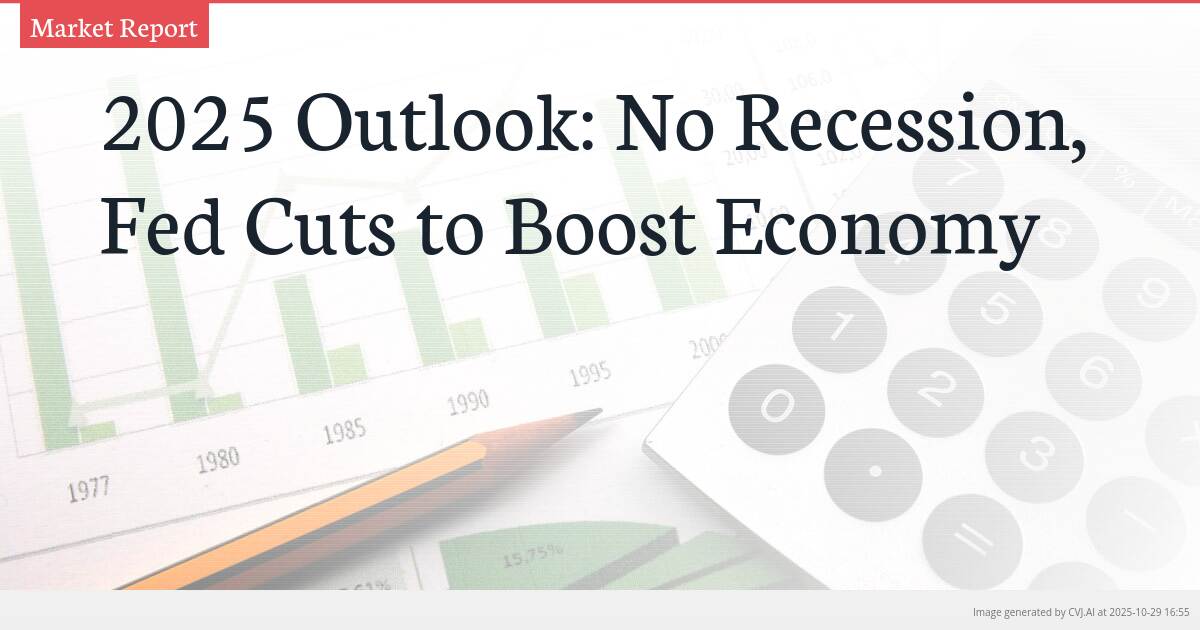This summary text is fully AI-generated and may therefore contain errors or be incomplete.
Introduction
The latest asset allocation outlook for Q4 2025 projects sustained economic expansion without recession over the next three years, with Federal Reserve rate cuts expected to stimulate growth while addressing labor market softening. Inflation is forecast to persist above the Fed’s target at approximately 3%, creating a unique economic environment where monetary policy adjustments will play a crucial role in maintaining growth momentum despite persistent price pressures.
Key Points
- Three-year forecast period shows no recession with GDP growth near trend levels
- Anticipated Fed funds rate cuts aimed at stimulating economy and supporting labor markets
- Inflation projected to stabilize around 3%, above Federal Reserve's long-term target
Economic Resilience Through 2025-2028
The Confluence Asset Allocation Quarterly outlook presents a remarkably stable economic forecast for the United States, projecting no recession throughout the three-year forecast period extending to 2028. This sustained expansion is particularly noteworthy given current economic uncertainties, with GDP growth expected to remain near trend levels. The analysis suggests that the U.S. economy possesses underlying strength that will carry it through potential headwinds, maintaining consistent growth patterns that defy typical business cycle expectations.
Central to this optimistic projection is the shifting composition of economic drivers, with business investment increasingly taking the lead in propelling growth. This transition from consumer-led expansion to business-driven growth represents a significant evolution in the economic landscape, potentially indicating greater sustainability in the expansion phase. The emphasis on corporate capital expenditure suggests businesses are positioning for long-term growth rather than reacting to short-term market conditions, reflecting confidence in the economic trajectory outlined in the Confluence Asset Allocation analysis.
Federal Reserve Policy as Economic Catalyst
The anticipated Federal Reserve funds rate cuts represent a pivotal element in the economic outlook, serving dual purposes of economic stimulation and labor market support. These monetary policy adjustments are expected to provide crucial support to an economy facing weakening employment conditions, demonstrating the Fed’s proactive approach to maintaining economic stability. The planned rate reductions signal a strategic shift from inflation-fighting to growth-supporting measures, reflecting the central bank’s assessment of evolving economic conditions.
This monetary policy pivot occurs against a backdrop where the Federal Reserve must balance competing priorities: supporting economic growth while managing persistent inflationary pressures. The expected rate cuts will likely provide liquidity to financial markets, lower borrowing costs for businesses and consumers, and help sustain the investment-driven growth trajectory. For market participants following ETF Trends, this policy direction suggests potential opportunities in rate-sensitive sectors and assets that typically benefit from accommodative monetary conditions.
Inflation's Persistent Presence
Despite the anticipated economic stability and Federal Reserve intervention, inflation is projected to remain stubbornly elevated at approximately 3%, consistently above the central bank’s long-term 2% target. This persistent gap between actual and target inflation suggests structural factors may be at play, potentially including supply chain transformations, demographic shifts, or changing global trade patterns that could maintain upward pressure on prices even as growth moderates.
The 3% inflation forecast represents a significant consideration for asset allocation decisions, as it implies real returns may be compressed across various investment vehicles. For investors monitoring USD-denominated assets through platforms like ETF Trends, this environment necessitates careful consideration of inflation-protected securities and assets with pricing power. The Confluence Asset Allocation analysis indicates that while inflation has moderated from recent peaks, it has settled at a level that continues to challenge traditional monetary policy frameworks and investment strategies.
This elevated inflation environment, combined with anticipated Fed rate cuts, creates a complex backdrop for financial markets where traditional relationships between interest rates, growth, and inflation may not hold. The persistence of above-target inflation alongside steady growth suggests the United States economy may be operating under a new paradigm that requires adjusted expectations and strategies from both policymakers and market participants engaged in traditional finance sectors.
📎 Read the original article on etftrends.com

